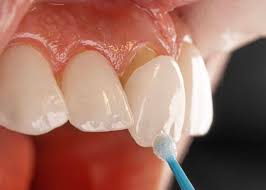The primary source of retention of porcelain veneer:
- A- mechanical retention from under cut
- B- mechanical retention from secondary retentive features
- C- chemical bond by saline coupling agent
- D- micromechanical bond from itching of enamel and porcelain.
The primary source of retention of porcelain veneer is: A. Mechanical retention from undercut
Here's why:
- Porcelain veneers are bonded to the tooth surface using a strong adhesive. However, the primary retention mechanism comes from the micromechanical interlocking between the adhesive resin and the tooth enamel created by etching a microscopic roughened surface on the tooth.
- Undercuts are small grooves or depressions prepared in the tooth enamel during tooth preparation for the veneer. These undercuts provide additional mechanical retention for the veneer, preventing it from dislodging.
Let's analyze the other options and why they are incorrect:
- B. Mechanical retention from secondary retentive features: While secondary features like bevels or incisal edges can contribute to overall stability, they are not the primary source of retention.
- C. Chemical bond by saline coupling agent: Saline coupling agents are not typically used for porcelain veneer bonding. The primary bonding relies on a resin adhesive that creates a strong chemical bond with the etched tooth enamel.
- D. Micromechanical bond from itching of enamel and porcelain: "Itching" is likely a typo and should be "etching." Etching is the correct term for creating the microscopic roughness on the tooth surface for improved adhesion, but it's not caused by "itching."
